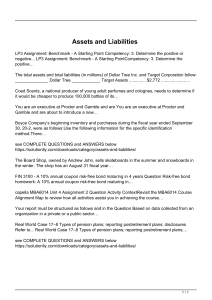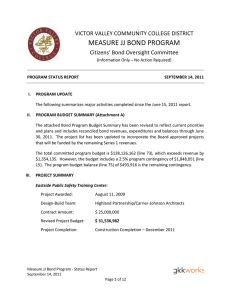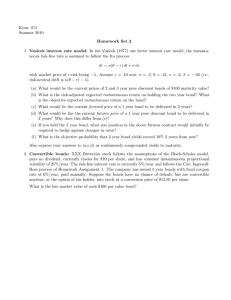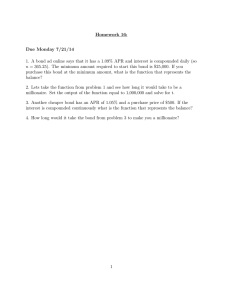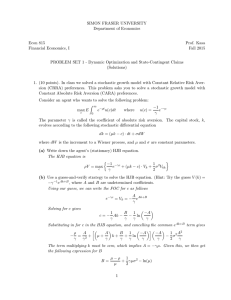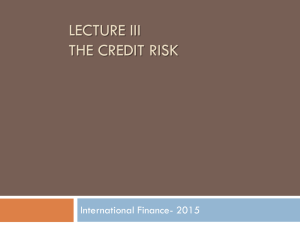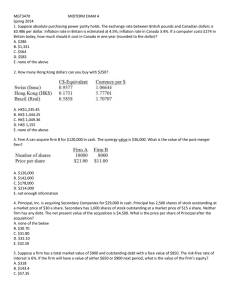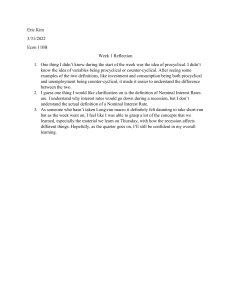Econ 807: Macroeconomic Theory and Policy Assignment 8: Asset Pricing Theory
advertisement
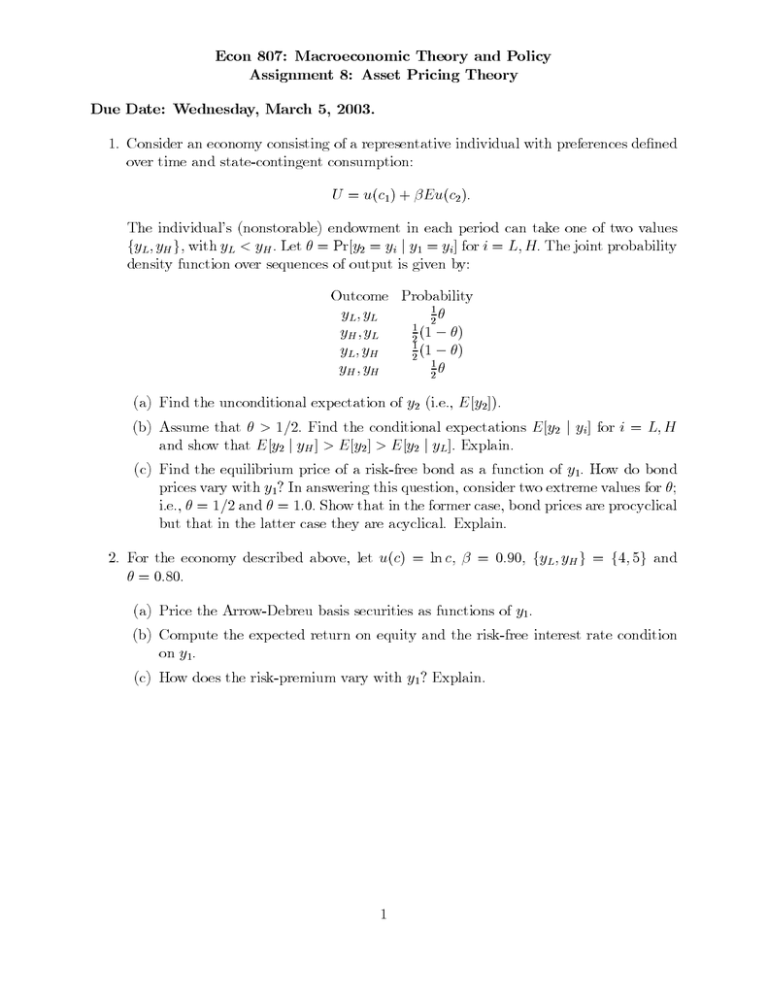
Econ 807: Macroeconomic Theory and Policy
Assignment 8: Asset Pricing Theory
Due Date: Wednesday, March 5, 2003.
1. Consider an economy consisting of a representative individual with preferences defined
over time and state-contingent consumption:
U = u(c1) + βEu(c2).
The individual’s (nonstorable) endowment in each period can take one of two values
{yL , yH }, with yL < yH . Let θ = Pr[y2 = yi | y1 = yi ] for i = L, H. The joint probability
density function over sequences of output is given by:
Outcome Probability
1
yL, yL
2θ
1
yH ,yL
2 (1 − θ)
1
yL, yH
2 (1 − θ)
1
yH , yH
2θ
(a) Find the unconditional expectation of
y2 (i.e., E [y2]).
(b) Assume that θ > 1/2. Find the conditional expectations
and show that E [y2 | yH ] > E [y2 ] > E [y2 | yL ]. Explain.
E [y2 yi] for i = L, H
|
(c) Find the equilibrium price of a risk-free bond as a function of y1. How do bond
prices vary with y1? In answering this question, consider two extreme values for θ;
i.e., θ = 1/2 and θ = 1.0. Show that in the former case, bond prices are procyclical
but that in the latter case they are acyclical. Explain.
2. For the economy described above, let u c
( ) = ln
θ = 0.80.
c, β
. , {yL , yH }
= 0 90
=
{4, 5}
and
(a) Price the Arrow-Debreu basis securities as functions of y1.
(b) Compute the expected return on equity and the risk-free interest rate condition
on y1.
(c) How does the risk-premium vary with y1? Explain.
1
